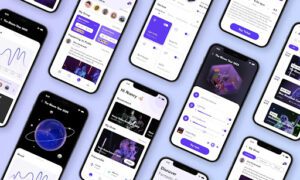SEO in 2026 isn’t about ticking boxes; it’s about showing Google exactly why your content deserves to rank.
Ticking boxes and hoping for rankings won’t cut it. If your content isn’t explicit, structured, and connected, stronger sites will outrank you every time.
Here’s what’s actually working right now, and what to fix before your competitors get there first.
1. Keywords Are Old News. Entities Run the Show.
Why Search Engines Care More About Context
Search engines don’t guess anymore.
They connect the dots between your site, your profiles, your structure, and your schema. If you haven’t defined your brand clearly across the web, they’ll ignore you and show someone else instead.
Quick wins:
- Use the Organization and Person schema
- Link out to profiles like LinkedIn or Crunchbase
- Connect content through topic clusters that reinforce your expertise
Structure Isn’t Just for Show
Schema markup doesn’t just make your site look nice in search; it makes you findable. Add JSON-LD to:
- Articles
- FAQs
- Author bios
- Service pages
Interlink those pages like they belong together because they do.
Real-World Result
Mr Noble SEO worked with The Furniture Market, resolving deep technical SEO issues that were holding the site back. After fixing performance issues, improving internal linking, and resolving index bloat, the site saw a 3x increase in organic revenue. Read the SEO case study.
2. AI Search Is the New Gatekeeper
How Your Content Gets Picked
Ask ChatGPT or Perplexity a question. Notice whose content they quote. Those sites didn’t get lucky; they had the right mix of structure, clarity, and presence.
Here’s how you join that club:
- Clear, scannable content
- A schema that explains what the page is and who wrote it
- Branded trust, consistent name, reviews, presence
Make Your Pages AI-Friendly
You’re writing for people who skim and bots that summarise.
Try this:
- Put a short, no-nonsense answer near the top of the page
- Use subheadings that actually describe what follows
- Apply the FAQ schema to common questions
Think: what would you quote if you were writing a summary?
Tracking the Invisible Win
Traffic isn’t the only signal. Track how often your content:
- Appears in AI summaries
- Is quoted in answer engines
- Earns mentions from assistant tools
Actual Use Case:
In one client project, we saw a Bing Copilot citation emerge just two weeks after reworking the schema and rewriting the core service pages.
There was no traffic spike at first, but branded search grew fast. The LLMs started crawling the site, and AI-generated results started surfacing soon after.
3. Search Isn’t Just on Google Anymore
Voice, Video, Visual. Pick Your Weapon
People are searching in more ways than ever: with their voice, a photo, or by scanning a video caption.
Don’t panic. Just prep your content:
- Alt text that describes the image like you’re explaining it to a friend
- Short videos with auto-captions and descriptive titles
- Paragraphs that sound like something you’d say out loud
Optimise for Where They’re Looking
Some people search on TikTok now. Others hit Amazon before Google. LinkedIn bios are showing up in AI snippets.
Things to check:
- Are your bios saying the same thing everywhere?
- Is your name spelt the same across platforms?
- Have you actually posted anything this year?
Don’t Forget the Locals
If you’re running a service business, proximity still wins.
Here’s the checklist:
- Google Business Profile: updated, accurate, reviewed
- Use LocalBusiness schema
- Get yourself listed in UK directories that aren’t 20 years out of date
4. Content That Doesn’t Expire Every Six Weeks
Cluster Your Topics, Not Just Your Headaches
Instead of writing five blog posts on nearly the same thing, try this:
- One big, useful pillar page
- Smaller pages that link into it (case studies, FAQs, testimonials)
- Regular updates to keep it fresh
It’s less work, gets better results, and keeps your internal links structured.
Give Them More Than a Wall of Text
Add something useful:
- A chart that explains a concept
- A 30-second explainer video
- A quote from a real client
Not everything needs to be fancy. Just helpful.
Tired Tactics to Skip:
- Publishing for the sake of it
- Letting AI write without editing
- Repeating yourself across five near-identical pages
5. Trust Signals Are the New Rankings
AI Likes Real Brands
Assistant tools skip over sites that feel rushed or underdeveloped. They prioritise:
- A real person behind the content
- A brand that appears elsewhere online
- Consistent messaging across platforms
If the bots can’t tell who we are or what we do, they’re not going to recommend us.
Who’s Writing The Content?
Use author bios. Real ones. Not “Admin.”
Include:
- Job title
- Industry experience
- Links to social profiles
- Pictures
And mark it up with the Author schema. Make it obvious someone wrote it, not something.
Reviews Speak Louder Than CTAs
Encourage your clients to:
- Leave reviews that describe what you actually did
- Mention specific services or outcomes
- Write more than “great job”
Not sure what Google looks for when assessing trust? Their Search Quality Rater Guidelines are still one of the best references.
6. Tech Basics Still Matter
Don’t Let Speed Kill You
Keep it moving:
- LCP under 2.5 seconds
- INP under 200ms
- CLS under 0.1
Use tools like PageSpeed Insights and aim for an 80%+ score on key pages.
Always test mobile, not just your desktop.
Make It Crawlable
- Fix orphan pages
- Keep essential pages no more than three clicks deep
- Avoid redirect chains
Write for humans. Mark up for machines.
Follow E-E-A-T guidelines, add FAQ and summary-style sections in content, and validate schema. These are the top recommendations for surfacing in LLMs and AI-generated search results going into 2026.
Watch:
- Branded search trends
- Clicks from rich results or summaries
- Pages that show up in AI results (even if no traffic shows yet)
Conclusion
By 2026, visibility won’t come from shortcuts. It’ll come from clarity, credibility, and consistency. AI systems aren’t guessing, they’re choosing. If your brand isn’t well-defined, well-connected, and well-represented, you’re out.
Refine your content. Tighten your structure. Build the kind of brand presence Google and AI tools can trust

































